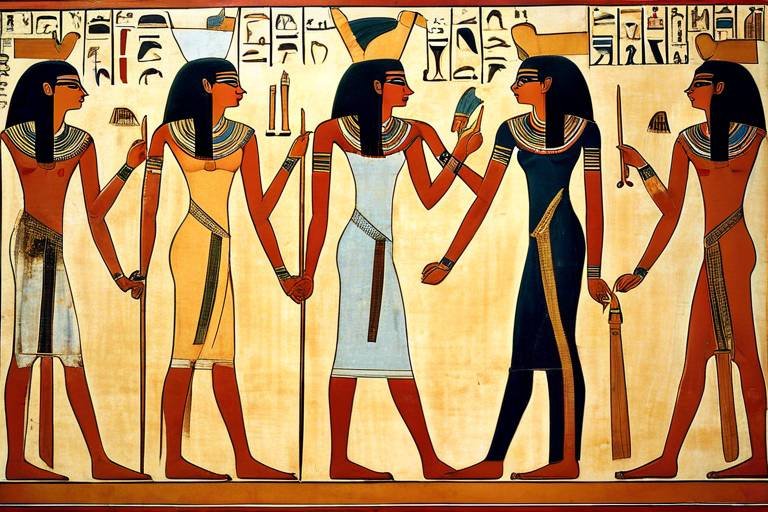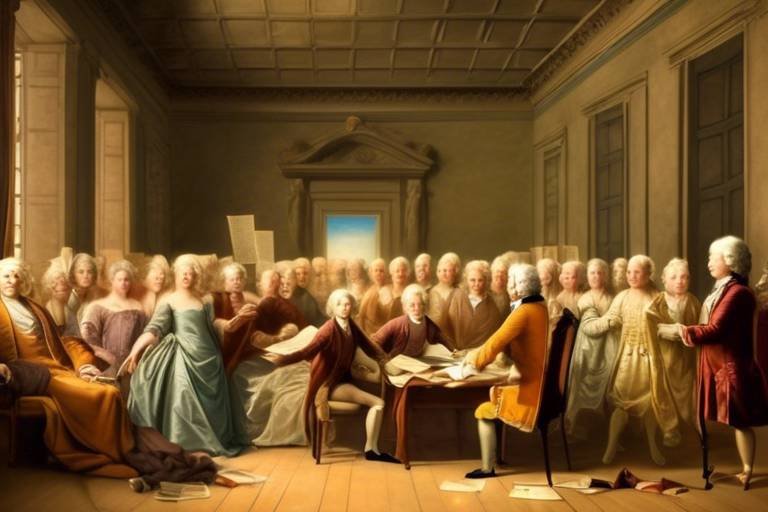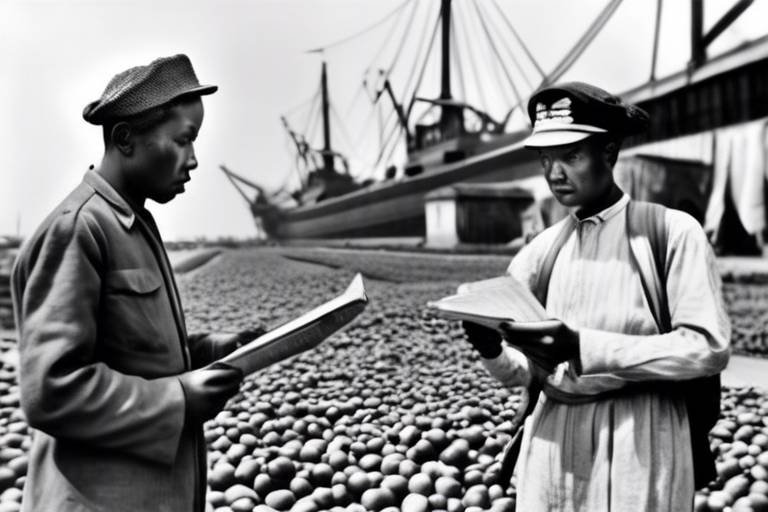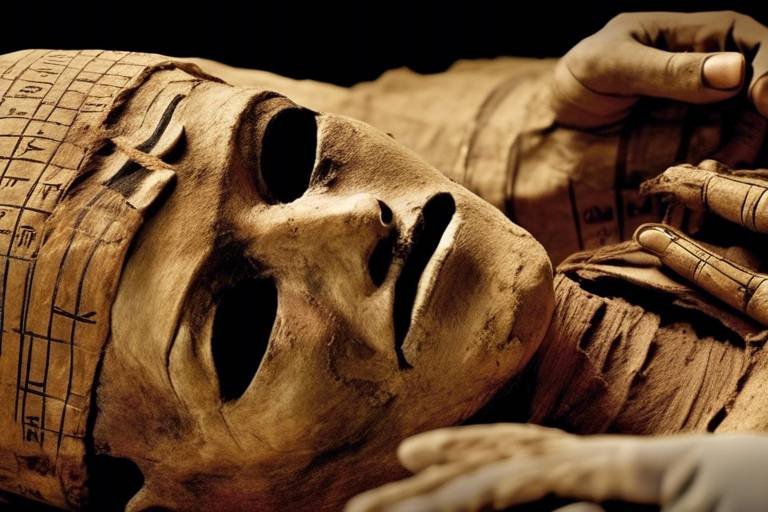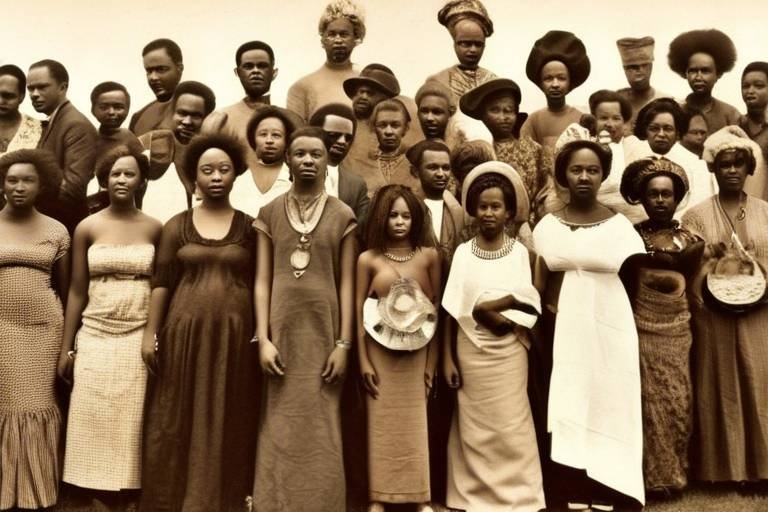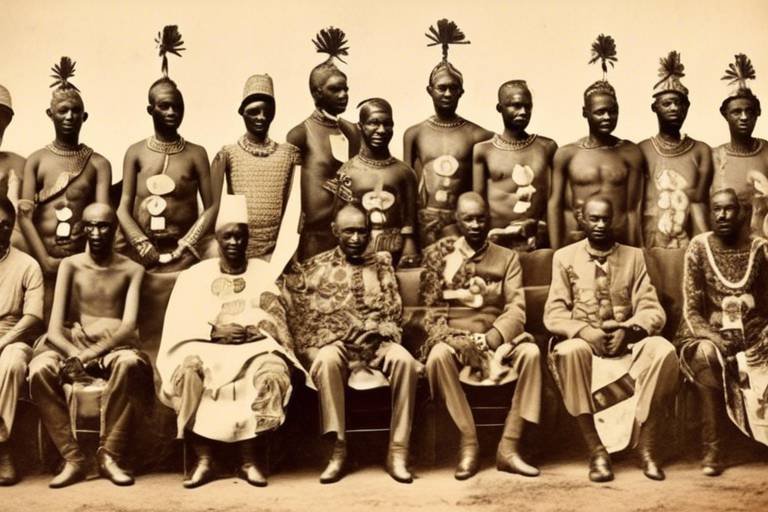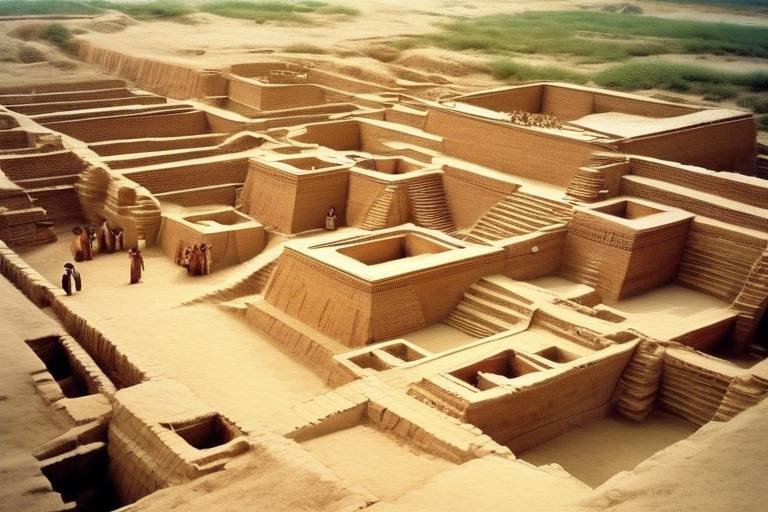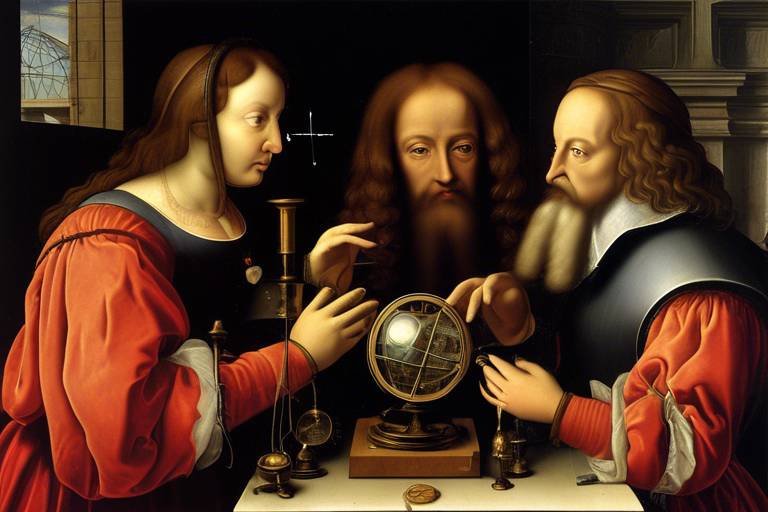The Role of Women in Ancient Egypt
Women in ancient Egypt held a unique and multifaceted role in society, contributing significantly to various aspects of life and leaving a lasting impact on the civilization. From the family structure to religious practices, women played vital roles that shaped the cultural landscape of ancient Egypt.
Within the family unit, women were highly respected and held significant influence. They were responsible for managing the household, raising children, and ensuring the well-being of the family. Despite primarily being in charge of domestic affairs, women also had the opportunity to engage in trade and commerce, showcasing their versatility and business acumen.
Moreover, women in ancient Egypt had access to educational opportunities, albeit limited compared to men. They could participate in intellectual pursuits, learning about literature, mathematics, and medicine. Some women even became scribes, demonstrating their intellectual capabilities and contributing to the scholarly endeavors of the time.
Notably, women in ancient Egypt were not confined to traditional gender roles and had the chance to hold positions of power and authority. Queens such as Cleopatra and Hatshepsut ruled with strength and wisdom, while priestesses conducted religious ceremonies and rituals, embodying the spiritual essence of the civilization.
Religion played a central role in the lives of ancient Egyptians, and women were integral to religious practices and beliefs. They worshipped goddesses such as Isis and Hathor, symbolizing fertility, motherhood, and protection. Women participated in religious ceremonies, offering prayers and rituals to honor the deities and ensure the prosperity of their communities.
Legal rights and protections for women in ancient Egypt were relatively progressive for their time. Women could own property, enter into contracts, and inherit wealth. Marriage laws provided women with certain rights, allowing them to divorce and remarry if necessary, granting them a level of autonomy and independence.
The artistic representations of women in ancient Egyptian art reflected their esteemed status in society. Paintings, sculptures, and hieroglyphics depicted women as symbols of beauty, grace, and power. Their images adorned temples, tombs, and monuments, immortalizing their contributions to art and culture.
In daily life, women in ancient Egypt engaged in various activities beyond domestic duties. They participated in community events, festivals, and religious ceremonies, fostering social cohesion and unity. Women's roles were diverse and dynamic, encompassing both public and private spheres of influence.
The legacy of women in ancient Egypt endures to this day, inspiring generations with their achievements and contributions. Their influence in art, culture, and society continues to resonate, reminding us of the remarkable women who shaped one of the greatest civilizations in history.

Women in Ancient Egyptian Society
Exploring the significant contributions and societal roles of women in ancient Egyptian civilization, shedding light on their rights, responsibilities, and influence in various aspects of life.
Women in ancient Egyptian society held a unique and revered position, playing vital roles within the family, community, and religious practices. Unlike in many other ancient civilizations, Egyptian women enjoyed a level of equality and respect that was uncommon for the time. They were not just confined to domestic duties but actively participated in various aspects of society.
Within the family, women were highly regarded as mothers and caretakers, responsible for raising children and managing household affairs. However, they also had the freedom to engage in economic activities, own property, and participate in legal matters. Women in ancient Egypt had the right to divorce, inherit property, and conduct business transactions independently.
In the community, women could hold positions of influence and leadership, particularly in religious roles. Priestesses played a crucial part in religious ceremonies and temple rituals, with some even reaching high ranks within the clergy. These women wielded significant power and respect in society, showcasing the esteem in which they were held.
Moreover, women in ancient Egyptian society were often depicted in art and literature as symbols of fertility, beauty, and wisdom. Their portrayal in paintings, sculptures, and hieroglyphics reflected the high regard in which they were held, emphasizing their importance in the cultural and social fabric of the civilization.
Overall, women in ancient Egyptian society enjoyed a level of autonomy and respect that set them apart from their counterparts in other ancient civilizations. Their roles were diverse and multifaceted, contributing significantly to the richness and complexity of Egyptian culture and society.
- What rights did women have in ancient Egypt?
- Were women allowed to hold positions of power in ancient Egyptian society?
- How were women portrayed in ancient Egyptian art?
- What were the educational opportunities available to women in ancient Egypt?

Educational Opportunities for Women
When it comes to educational opportunities for women in ancient Egypt, it's fascinating to discover the progressive approach that this ancient civilization had towards female education. Unlike many other societies of the time, where women were often limited in their access to learning, ancient Egyptian women had avenues to pursue intellectual growth and knowledge acquisition.
One of the most notable educational opportunities for women in ancient Egypt was the access to formal schooling. While it was more common for boys to attend formal schools, girls from affluent families had the chance to receive education in reading, writing, mathematics, and even music. These educational institutions provided a foundation for women to develop their skills and contribute to society in various ways.
Moreover, women in ancient Egypt also had the opportunity to engage in informal education within their households. Mothers and female relatives played a crucial role in passing down knowledge and skills to younger generations. This informal education helped women learn practical skills related to household management, childcare, and other essential aspects of daily life.
Furthermore, women in ancient Egypt were not limited to traditional gender roles when it came to intellectual pursuits. Some women pursued careers in fields such as medicine, writing, and even religious studies. These empowered women were able to make significant contributions to their society through their expertise and knowledge.
Overall, the educational opportunities available to women in ancient Egypt were diverse and progressive, offering them a chance to expand their minds and contribute to various aspects of society. The emphasis on female education in ancient Egypt highlights the value that this civilization placed on the intellectual development of women, setting a precedent for gender equality in the realm of education.

Women in Positions of Power
Women in ancient Egypt held remarkable positions of power and authority, challenging traditional gender roles and societal norms. Queens such as Cleopatra and Hatshepsut are well-known examples of women who ascended to the throne and ruled with strength and wisdom. These powerful women were not confined to the domestic sphere but actively participated in political affairs, military campaigns, and diplomatic relations, shaping the course of history with their leadership.
Moreover, priestesses played a crucial role in religious ceremonies and rituals, serving as intermediaries between the people and the gods. These women held significant influence within the religious hierarchy, guiding spiritual practices and overseeing sacred rites. Their devotion and connection to the divine elevated their status and granted them a level of reverence and respect within the community.
Furthermore, women also served as officials and administrators in various governmental roles, managing estates, overseeing legal matters, and supervising economic activities. Their competence and expertise in governance were recognized and valued, allowing them to make decisions that impacted the welfare and prosperity of the society. Through their administrative prowess, these women demonstrated intelligence, competence, and leadership skills that were essential for the smooth functioning of the state.
Overall, women in positions of power in ancient Egypt defied conventional expectations and stereotypes, proving that gender is not a barrier to achieving greatness and making a lasting impact on society. Their contributions and accomplishments serve as a testament to the capabilities and potential of women in leadership roles, inspiring future generations to strive for excellence and pursue their ambitions without limitations.

Women in Ancient Egyptian Religion
In ancient Egyptian society, women played a significant role in religious practices, rituals, and beliefs. They were not only worshippers but also active participants in religious ceremonies, often serving as priestesses in temples dedicated to various deities. These priestesses held important responsibilities in maintaining the connection between the people and the gods, performing sacred rites, and interpreting divine messages.
Moreover, women in ancient Egypt were closely associated with goddess worship, with many female deities holding prominent positions in the pantheon. Isis, Hathor, and Sekhmet are just a few examples of powerful goddesses revered for their roles in fertility, motherhood, and protection. The veneration of these goddesses reflected the high regard for femininity and the nurturing aspects of life within Egyptian religious beliefs.
Artistic representations in temples and tombs often depicted women engaging in religious activities, such as offering rituals, hymn singing, and sacred dances. These depictions not only showcased the spiritual devotion of women but also highlighted their integral role in maintaining the cosmic order and harmony believed to be essential for the prosperity of the civilization.
Furthermore, women in ancient Egyptian religion were believed to possess special connections to the divine realm, with some individuals attaining the status of oracles or seers who could communicate with the gods and provide guidance to the community. These women were revered for their prophetic abilities and were consulted in times of need or uncertainty, demonstrating the respect and trust placed in their spiritual insights.

Women's Rights and Legal Status
Women's rights and legal status in ancient Egypt were remarkably progressive compared to many other ancient civilizations. Women enjoyed a level of legal and social equality that was uncommon for the time period. In matters of marriage, women had the right to choose their own spouses, own property, and initiate divorce proceedings. This autonomy in marital affairs was a significant departure from the norms of other ancient societies.
Moreover, women in ancient Egypt had the right to inherit property and wealth from their parents, allowing them to accumulate assets and pass them down to their own children. This legal protection ensured a level of financial independence for women that was not common in many other cultures of the time.
Legal documents from ancient Egypt also reveal that women could serve as witnesses in legal proceedings, sign contracts, and engage in business transactions. This level of legal recognition and participation in public life was a testament to the respect and rights afforded to women in ancient Egyptian society.
Additionally, women had recourse to the legal system to seek justice and protection. Laws existed to safeguard women from various forms of harm, ensuring their safety and well-being. These legal protections extended to issues of domestic violence, property disputes, and inheritance rights.
Overall, the legal rights and status of women in ancient Egypt were indicative of a society that valued and respected women as equal members. The legal framework provided women with autonomy, protection, and opportunities for participation in various aspects of life, setting a remarkable precedent for gender equality in the ancient world.

Artistic Representations of Women
Artistic representations of women in ancient Egypt provide valuable insights into the societal roles and perceptions of femininity during that time. Women were depicted in various forms of art, including paintings, sculptures, and hieroglyphics, showcasing their importance and influence in Egyptian society.
One of the most iconic images of women in ancient Egyptian art is the depiction of the goddess Isis, revered as the ideal mother and wife. Isis was often portrayed with outstretched wings, symbolizing protection and nurturing qualities, embodying the essence of motherhood and fertility.
Furthermore, women were frequently depicted in artworks engaged in daily activities such as weaving, baking bread, or tending to children, highlighting their contributions to household management and family life. These representations not only celebrated the domestic roles of women but also emphasized their essential role in maintaining the stability and harmony of the family unit.
Moreover, artistic representations of queens and noblewomen in elaborate attire and regal poses reflected their status and power within ancient Egyptian society. These depictions served to glorify and immortalize the achievements and influence of women in positions of authority, showcasing their leadership and political prowess.
Additionally, the use of symbolic imagery in ancient Egyptian art, such as the ankh symbol representing life or the eye of Horus symbolizing protection, further emphasized the divine and mystical aspects associated with women in Egyptian culture. Women were often portrayed with symbols of fertility, prosperity, and protection, underscoring their connection to the spiritual realm and the natural world.
In conclusion, the artistic representations of women in ancient Egypt not only captured the beauty and grace of the female form but also celebrated the multifaceted roles and significance of women in shaping the cultural and religious landscape of this ancient civilization.

Women in Daily Life
Women in ancient Egypt played a crucial role in daily life, contributing significantly to various aspects of society. In their daily lives, women were responsible for managing households, overseeing childcare, and actively participating in community activities. They were the backbone of family life, ensuring the smooth functioning of domestic affairs and the well-being of their families.
Moreover, women in ancient Egypt were skilled in various crafts and trades, such as weaving, pottery making, and jewelry production. These skills not only added to the family's income but also showcased their creativity and artistic talents. Women were also involved in agricultural activities, assisting in planting and harvesting crops to support their communities.
Additionally, women in ancient Egypt enjoyed a level of social freedom and autonomy not seen in many other ancient civilizations. They could own property, conduct business transactions, and even initiate divorce proceedings. This legal status granted them a level of independence and agency in decision-making that was uncommon for women of that era.
Furthermore, women in daily life actively participated in religious ceremonies and rituals, honoring the gods and goddesses of ancient Egypt. They played essential roles in temple activities, offering prayers, performing sacred rites, and embodying the divine feminine in religious practices. Women's devotion to religious beliefs and practices was integral to the spiritual fabric of ancient Egyptian society.
In conclusion, the daily life of women in ancient Egypt was multifaceted and dynamic, encompassing roles as caretakers, artisans, businesswomen, and religious devotees. Their contributions to daily life were invaluable, shaping the social, cultural, and economic landscape of ancient Egyptian civilization.

Legacy of Women in Ancient Egypt
The legacy of women in ancient Egypt is a tapestry woven with threads of resilience, creativity, and influence that continue to inspire generations. From the powerful queens who ruled alongside pharaohs to the skilled artisans who crafted intricate jewelry and textiles, women played a vital role in shaping the cultural landscape of ancient Egyptian civilization.
One of the most enduring legacies of women in ancient Egypt is their representation in art and architecture. The graceful figures of goddesses and queens immortalized in statues and reliefs reflect the reverence and respect accorded to women in Egyptian society. These artistic representations not only served as symbols of beauty and grace but also as embodiments of divine power and wisdom.
Moreover, women in ancient Egypt were instrumental in preserving and passing down cultural traditions and knowledge. Through their roles as mothers, teachers, and priestesses, women imparted valuable skills, beliefs, and practices to future generations. Their contributions to education, religion, and social customs laid the foundation for the rich tapestry of Egyptian culture that endures to this day.
Furthermore, the economic and social influence of women in ancient Egypt cannot be understated. Women were active participants in trade, agriculture, and craftsmanship, contributing to the prosperity and development of Egyptian society. Their entrepreneurial spirit and ingenuity in various industries left an indelible mark on the economic landscape of the ancient world.
As we reflect on the legacy of women in ancient Egypt, we are reminded of their enduring impact on art, culture, and society. Their legacy serves as a testament to the resilience, creativity, and leadership of women throughout history, inspiring future generations to embrace their potential and strive for greatness.
Frequently Asked Questions
- What roles did women play in ancient Egyptian society?
Women in ancient Egypt held diverse roles within the family, community, and religious practices. They were not only caretakers of the household but also had opportunities to engage in intellectual pursuits, religious ceremonies, and even hold positions of authority.
- Did women have educational opportunities in ancient Egypt?
Ancient Egyptian women did have access to education, although the extent varied based on social class. They could learn to read and write, participate in artistic and intellectual activities, and some even became scribes or priestesses.
- Were there women in positions of power in ancient Egypt?
Absolutely. Women in ancient Egypt could rise to positions of power and influence, including becoming queens, priestesses, or officials. Some notable female pharaohs like Hatshepsut and Cleopatra exemplify the authority women could wield in ancient Egyptian society.
- What were the legal rights of women in ancient Egypt?
Women in ancient Egypt had legal rights that allowed them to own property, engage in business, and inherit wealth. They could also initiate divorce, seek justice in cases of mistreatment, and participate in legal proceedings.
- How were women depicted in ancient Egyptian art?
Women were frequently portrayed in ancient Egyptian art, often symbolizing fertility, beauty, and grace. They appeared in various forms such as paintings, sculptures, and hieroglyphics, showcasing their importance in society and culture.

